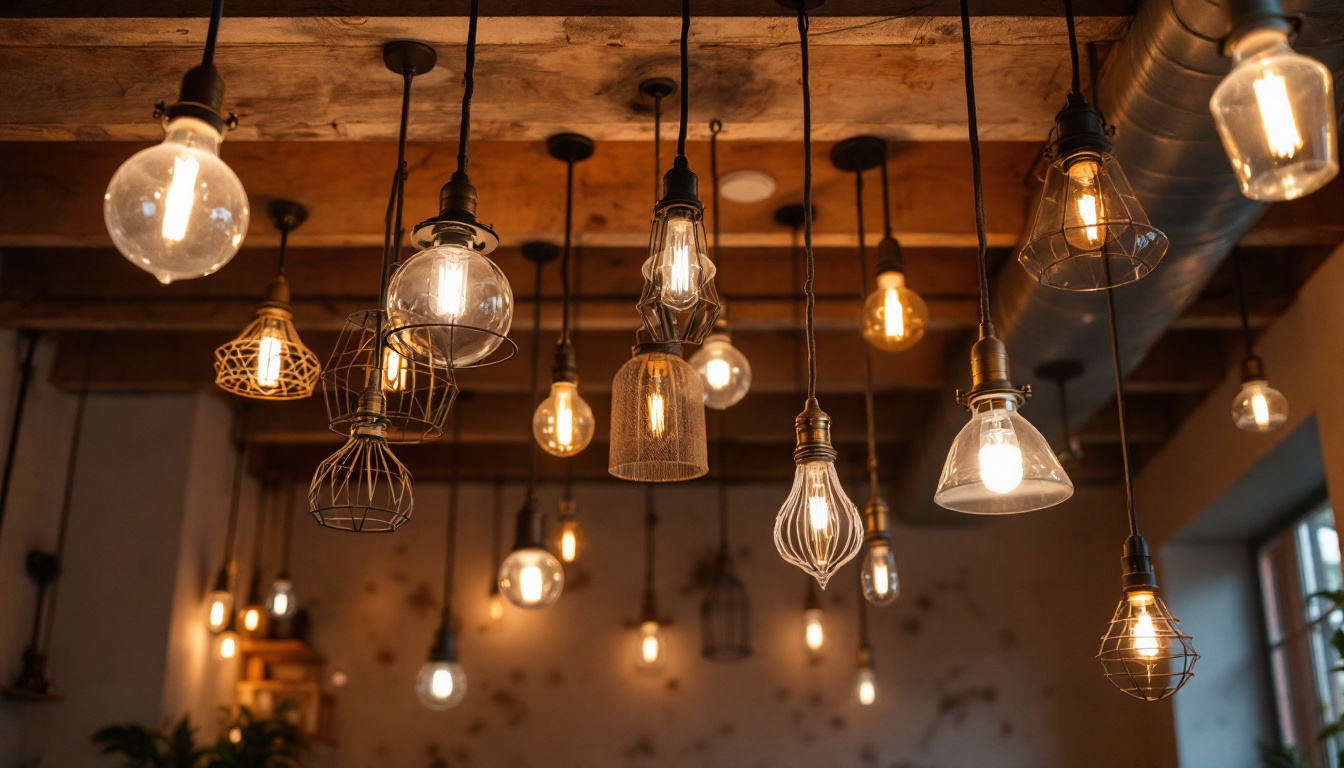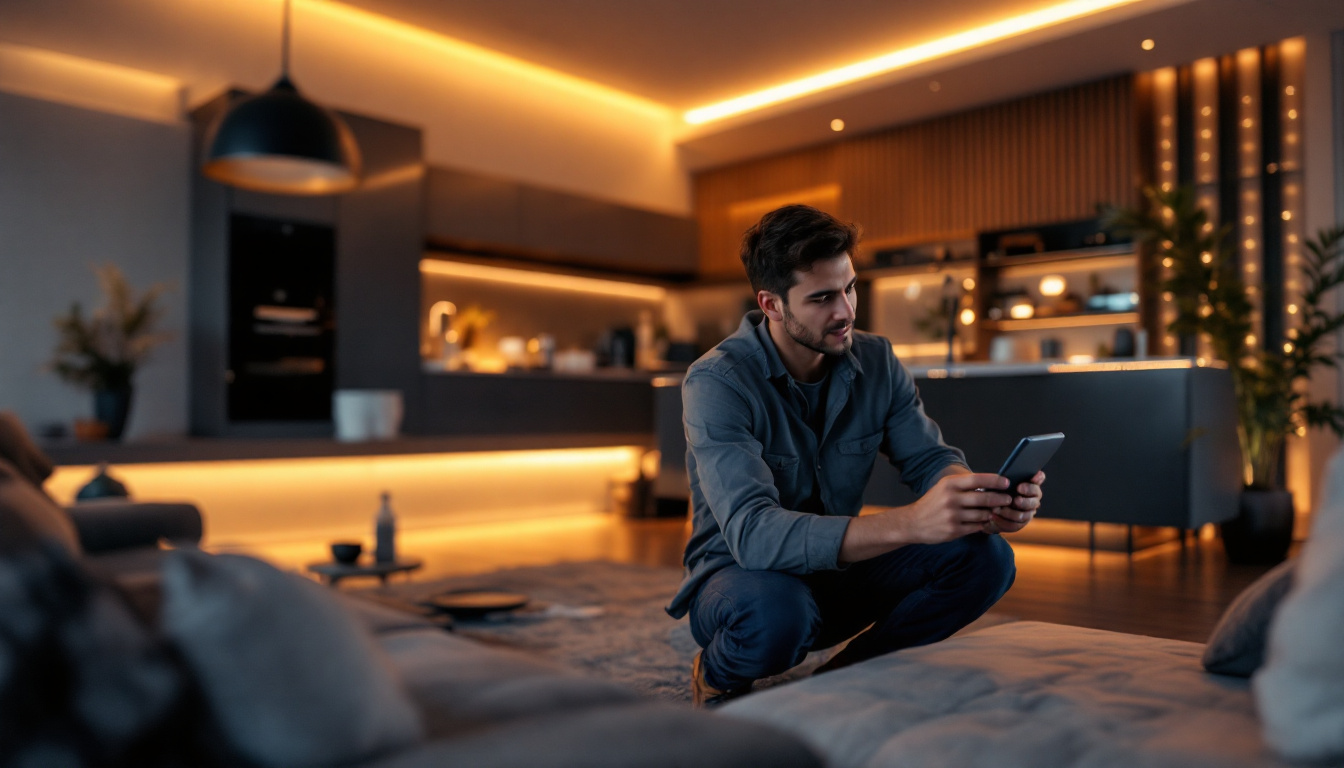
In the realm of lighting design, ceiling-mounted fixtures often serve as the unsung heroes of illumination. While many projects focus on wall sconces, table lamps, and floor lights, the ceiling provides a vast canvas for creativity and functionality. hanging lights, in particular, can dramatically transform a space, providing both aesthetic appeal and practical lighting solutions.
Ceiling-mounted lights not only enhance the visual dynamics of a room but also play a crucial role in achieving the desired ambiance. They can create focal points, improve visibility, and even influence the mood of the space. For lighting contractors, understanding the potential of hanging lights can elevate their projects and satisfy client expectations.
When considering hanging lights, it is essential to explore the various types available. Each type offers unique characteristics that can complement different design styles and functional needs.
Integrating hanging lights into a lighting project offers several advantages. Firstly, they can enhance the overall aesthetic of a space, adding a layer of sophistication and style. Secondly, they allow for greater flexibility in lighting design, enabling contractors to tailor solutions to specific client needs.
Moreover, hanging lights can improve the functionality of a space. For instance, pendant lights over a kitchen island can provide focused task lighting, while a chandelier in a dining room can create an inviting atmosphere for meals and gatherings. By understanding these benefits, lighting contractors can make informed decisions that lead to successful projects.
In addition to their aesthetic and functional advantages, hanging lights can also serve as a means of personal expression. With a myriad of styles, colors, and materials available, homeowners can select fixtures that reflect their unique tastes and complement their interior design themes. From industrial metal pendants to bohemian woven chandeliers, the right choice can infuse a space with character and warmth. Furthermore, the use of dimmable options in hanging lights allows for even greater control over the ambiance, enabling users to adjust the brightness according to the occasion or time of day.
Another critical aspect to consider is the energy efficiency of modern hanging lights. With the rise of LED technology, many hanging fixtures now offer energy-saving options that not only reduce electricity costs but also contribute to a more sustainable lifestyle. Lighting designers and contractors can recommend energy-efficient solutions that align with eco-friendly practices, appealing to environmentally conscious clients. This combination of style, functionality, and sustainability makes hanging lights an essential component of contemporary lighting design.
When planning a lighting project that includes hanging lights, several design considerations must be taken into account. These factors can significantly influence the effectiveness and appeal of the final installation.
One of the most critical aspects of hanging lights is their height and scale. A fixture that is too low can obstruct views and create a cramped feeling, while one that is too high may fail to provide adequate illumination. As a general guideline, pendant lights should hang approximately 30 to 36 inches above a dining table or kitchen island. For chandeliers, the height can vary based on the room’s ceiling height and the fixture’s design.
Additionally, the scale of the fixture should complement the room’s dimensions. A large chandelier can serve as a stunning focal point in a spacious living room, while smaller pendant lights may be more appropriate for a cozy nook. Achieving the right balance ensures that the lighting enhances the room’s overall design rather than detracts from it.
The style and theme of the room should also guide the selection of hanging lights. Whether the design leans towards modern, rustic, industrial, or traditional, the chosen fixtures should harmonize with other elements in the space. For example, a sleek, minimalist pendant light may suit a contemporary kitchen, while an ornate chandelier might be better suited for a classic dining room.
Contractors should consider the materials, colors, and shapes of the fixtures in relation to the existing decor. By selecting hanging lights that align with the overall theme, contractors can create a cohesive and visually appealing environment.
Proper installation is crucial for the performance and safety of hanging lights. Lighting contractors must adhere to best practices to ensure that fixtures are securely mounted and function effectively.
Before installation, it is essential to assess the electrical requirements of the chosen fixtures. Contractors should verify that the existing wiring can support the new lights and that the circuit can handle the additional load. If necessary, upgrading the wiring or circuit may be required to ensure safety and compliance with local codes.
Additionally, using the appropriate mounting hardware is vital. Each fixture may have specific installation instructions, and following these guidelines will help prevent issues such as sagging or improper alignment. Ensuring that all connections are secure and that the fixture is level will contribute to a polished final look.
The placement and arrangement of hanging lights can significantly impact the overall lighting effect. For instance, when installing multiple pendant lights, spacing them evenly can create a visually pleasing arrangement. A common approach is to space them about 24 to 30 inches apart, depending on the size of the fixtures and the area being illuminated.
In open-concept spaces, it may be beneficial to use hanging lights to delineate different areas. For example, a row of pendant lights over a kitchen island can visually separate the cooking area from the dining space. This not only enhances functionality but also adds a layer of design interest.
Incorporating dimmers and controls into hanging light installations can greatly enhance their functionality. Dimming capabilities allow users to adjust the brightness according to their needs, creating a versatile lighting environment.
Dimming switches can transform the atmosphere of a room. For instance, a brightly lit dining area may be perfect for family meals, but a softer glow can create a more intimate setting for romantic dinners. Similarly, a well-lit kitchen can facilitate cooking, while dimmed lights can provide a calming ambiance during social gatherings.
Moreover, using dimmers can contribute to energy savings. By reducing the brightness of hanging lights when full illumination is unnecessary, users can decrease energy consumption and extend the lifespan of the bulbs.
As technology continues to evolve, smart lighting solutions have become increasingly popular. These systems allow users to control their hanging lights remotely through smartphones or voice-activated devices. Smart bulbs can also offer customizable color temperatures and brightness levels, providing even greater flexibility in lighting design.
For contractors, recommending smart lighting solutions can add significant value to their projects. Clients often appreciate the convenience and modernity that smart lighting brings, making it a selling point in competitive markets.
Even experienced lighting contractors can fall victim to common mistakes when incorporating hanging lights into their projects. Recognizing these pitfalls can help ensure a successful installation.
One of the most frequent errors is selecting fixtures that do not match the scale of the room. A large chandelier in a small space can overwhelm the area, while tiny pendant lights in a grand foyer may get lost in the vastness. Always consider the dimensions of both the fixture and the room to maintain a harmonious balance.
Additionally, failing to account for the height of the ceiling can lead to improper placement. Fixtures that hang too low can obstruct movement, while those that are too high may not provide adequate illumination. Taking precise measurements before installation is essential for achieving the desired effect.
Another common mistake is neglecting the importance of layered lighting. Relying solely on hanging lights can lead to uneven illumination and create dark corners in a room. It is crucial to incorporate a mix of ambient, task, and accent lighting to create a well-rounded lighting scheme.
Contractors should consider how hanging lights can complement other light sources, such as wall sconces or recessed lighting. By layering different types of lighting, they can enhance the functionality and aesthetic appeal of the space.
In conclusion, hanging lights from the ceiling are often the missing piece in many lighting projects. Their ability to enhance aesthetics, improve functionality, and create a desired ambiance makes them an essential consideration for lighting contractors. By understanding the various types of hanging lights, design considerations, installation tips, and the importance of layered lighting, contractors can elevate their projects and exceed client expectations.
As the demand for innovative lighting solutions continues to grow, embracing the potential of hanging lights can set contractors apart in a competitive market. By incorporating these fixtures thoughtfully and effectively, they can create stunning, functional spaces that leave a lasting impression.
Ready to take your lighting projects to the next level? Discover the transformative power of hanging lights with LumenWholesale’s extensive selection of premium, spec-grade lighting products. Our commitment to quality, affordability, and convenience ensures that you can access the best lighting solutions at wholesale prices, with the added benefit of free shipping on bulk orders. Elevate your designs and impress your clients by choosing LumenWholesale for all your lighting needs. Start exploring our collection and experience the unbeatable value today at Wholesale Lighting at the Best Value.

Discover the advantages of high power solar flood lights versus alternatives.

Discover essential tips and insights for lighting contractors looking to integrate automated lighting solutions.

Discover the latest in energy-efficient lighting with 12-volt screw-in LED bulbs.

Discover the innovative strategies lighting contractors use to integrate industrial ceiling fans with lights, enhancing both functionality and aesthetics.